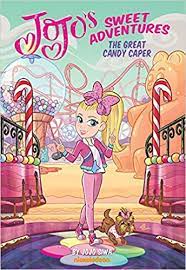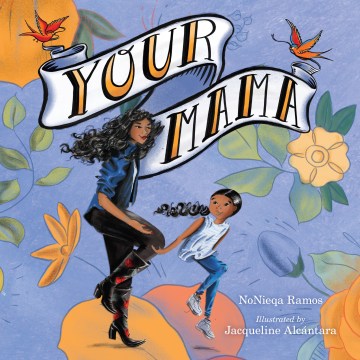Nickolodeon;s JoJo Siwa is invited to sing at the opening of a new candy-themed park, SugarPalooza, and takes her two friends, Grace and Kyra for a special tour before the show. The park’s owner’s daughter, Avery, and her friend, Jada, join the tour. Something’s not quite right, but JoJo can’t figure it out. Actually, there’s a lot that isn’t right, including a big mess of chocolate as the chocolate pumps malfunction. Candy is everywhere, rides are breaking down and Grace is missing! JoJo and Kyra spring into action to fix both calamities. The chocolate malfunction is fixed, thanks to help from Jada and their tour guide, Maddy. And, they locate Grace, who has a history with Avery (not a nice girl). But, Grace saves Avery despite their bad relationship, and Avery apologizes. The show must go on and, after a cleanup, the park opens and JoJo performs for the adoring crowds. Everything is sweet in this Candy Caper.
This graphic novel is full of color and a simple story line (girl drama that is fixed in the end). The font is fairly small. The illustrations are set in one to five panes per page. Fans of JoJo Siwa will enjoy this book and a wider audience might like the adventurous romp through SugarPalooza.







